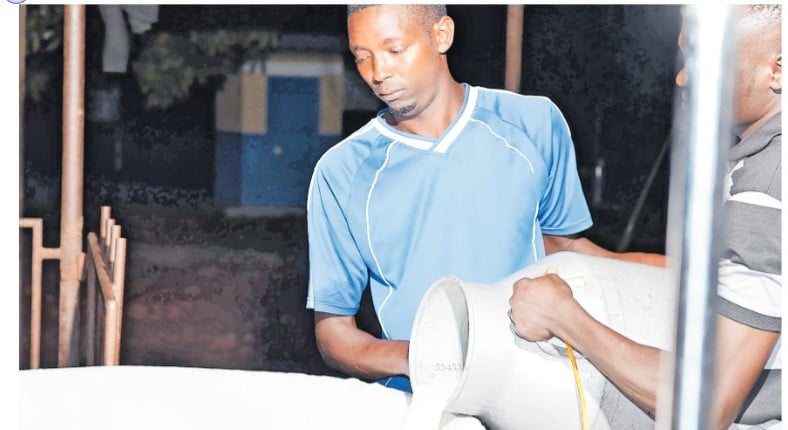Prime
Artificial insemination to boost local animal production

When you use female sexed semen, you get closer to 100 percent chances of getting a female calf and when you use male sexed semen, you get close to 100 percent chances of getting a male calf. Photo by Colleb Mugume
What you need to know:
- This story is sponsored by the National Animal Genetics Resources Centre and Data Bank (NAGRC & DB)
Naturally, with domestic animals, most especially cows, it is hard, if not impossible for farmers to determine the sex of the calf a cow is to produce. But with the introduction of sexed semen under artificial insemination, local cattle farmers in Uganda now have an over 90 per cent chance of getting a calf of the sex they desire. Sexed semen is semen that has sperms able to produce more offsprings of a desired sex. It is of two types – female and male sexed semen.
“When you use female sexed semen, you get closer to 100 percent chances of getting a female calf and when you use male sexed semen, you get close to 100 percent chances of getting a male calf,” Dr Wilberforce Kifudde, the acting executive director at NAGRC & DB says.
This development comes as a boost to local farmers following a recent World Bank funded Eastern Africa Agricultural Productivity Project (EAAPP) 2010-2015. It is aimed at improving Uganda’s capacity to provide genetic improvement services, artificial insemination and embryo transfer. It is being implemented by the Ministry of Agriculture, Animal Industry and Fisheries under the National Animal Genetics Resources Centre and Data Bank, NAGRC & DB at Entebbe. The centre is charged with livestock genetic improvement and conservation of indigenous animal genetic resources for Uganda.
Dr Wilberforce Kifudde, the acting executive director at NAGRC & DB states that while the development aims at improving the genetic potential of the national herds for increased meat and milk production, the new method also makes it possible to use semen from bulls from all over the world just on one farm.
“Artificial insemination has proven the most affordable method to improve the genetic potential of any herd worldwide and maximises the good genetics of the male parent. Ugandan farmers need to take this opportunity and embrace the benefits of this affordable technology,” Dr Kifudde emphasises.
While the centre at Entebbe has the capacity to house over 40 different bulls, the bull herd accommodates different breeds of bulls for dairy, dual purpose and beef purposes from which semen for artificial insemination is extracted and processed and stored. These bull breeds were imported from countries like South Africa and Kenya.
“Local breeds have low production and low growth rates. But with artificial insemination now in place, farmers will get better animals with better growth and high production rates,” Dr Kifudde adds.
Recent funding has seen the re-equipment of the semen laboratory with new machinery and this has increased the production potential from 2,500 doses to 15,000 doses of affordable quality semen per week.
The station also imports semen including sexed semen from countries like USA, Canada, Europe, UK, South Africa and New Zealand with the aim of responding to different farmer needs.
Over the last decade, Dr Kifudde says one of the biggest bottlenecks to artificial insemination in Uganda was liquid nitrogen that is used to maintain semen viable for long periods under 196°C. However, with the new liquid nitrogen plant at the centre with a capacity to produce 89 litres per hour, which is approximately 10 times more than the previous capacity that was purchased two years ago, it means that the limitation was overcome. The other major setback was poor access to trained artificial insemination technicians.
Currently, Kifudde says there are over 1,840 trained artificial insemination technicians countrywide, in addition to over 80 per cent of the districts in the country, supplied with artificial insemination equipment under National Agricultural Advisory Services.
This, according to Kifudde implies that livestock farmers in those districts can now access these services through their district production offices. Furthermore, the government plans to employ at least one artificial insemination technician per sub-county in order to enhance this access to these services.
The government has also extended artificial insemination supplies closer to the districts through regional bulking centres called artificial insemination satellites, currently four in number, from which the technicians in these areas pick the inputs (semen and liquid nitrogen) to reduce transportation costs and time that are spent in picking them from Entebbe.
A smaller capacity plant is located at Mbarara Zonal Agricultural Research and Development Institute in Mbarara District, which serves artificial insemination technicians in the South Western region, including those from Democratic Republic of Congo and western Tanzania.
Embryo transfer technology
The programme also provides embryo transfer technology. Under this method of animal reproduction at the centre’s refurbished laboratory, Dr Jackson Mubiru, the director responsible for the Rural Poultry Development Programme, observes that it exploits the genetics in high-grade female cows.
“We have had trials and we now have the capacity to carry it out. With embryo transfer, a cow can give between 40 -78 calves or more in its lifetime compared to approximately ten (10) or less calves under natural reproduction,” Dr Mubiru explains.
Here, the embryo is carried into the surrogate animal from where it is bred until it is produced and that the offspring from this exercise is availed to farmers. This programme will be rolled to benefit farmers countrywide.
This story is sponsored by the National Animal Genetics Resources Centre and Data Bank (NAGRC & DB)




